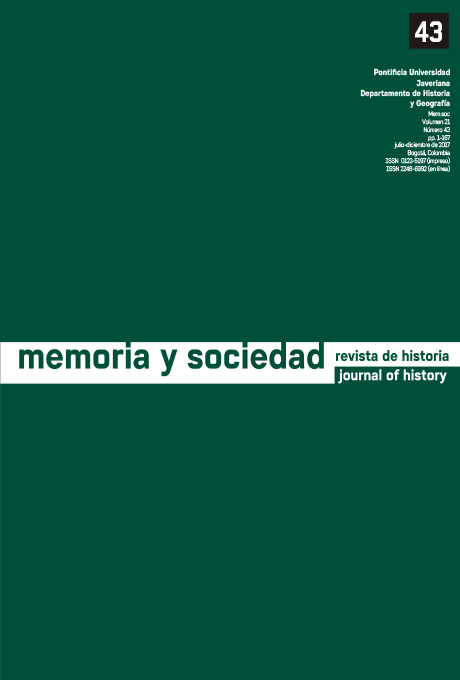Abstract
En este artículo se analizan retratos fotográficos tomados a la población indígena de la comunidad embera (catío y chamí), habitante del Chocó, que fue objeto de evangelización por parte de la Misión del Inmaculado Corazón de María, las Hermanas de la Presentación (Quibdó) y las Siervas del Santísimo Sacramento (Istmina) desde comienzos del siglo XX. A partir de imágenes, de narrativas de la misión y de cifras de estadísticas disponibles en las fuentes primarias, se identifican y analizan los significados que los misioneros dieron al proceso de civilización a través de la evangelización.The journal Memoria y Sociedad is registered under a Creative Commons Attribution 4.0 International Public License. Thus, this work may be reproduced, distributed, and publicly shared in digital format, as long as the names of the authors and Pontificia Universidad Javeriana are acknowledged. Others are allowed to quote, adapt, transform, auto-archive, republish, and create based on this material, for any purpose (even commercial ones), provided the authorship is duly acknowledged, a link to the original work is provided, and it is specified if changes have been made. Pontificia Universidad Javeriana does not hold the rights of published works and the authors are solely responsible for the contents of their works; they keep the moral, intellectual, privacy, and publicity rights.
Approving the intervention of the work (review, copy-editing, translation, layout) and the following outreach, are granted through an use license and not through an assignment of rights. This means the journal and Pontificia Universidad Javeriana cannot be held responsible for any ethical malpractice by the authors. As a consequence of the protection granted by the use license, the journal is not required to publish recantations or modify information already published, unless the errata stems from the editorial management process. Publishing contents in this journal does not generate royalties for contributors.

